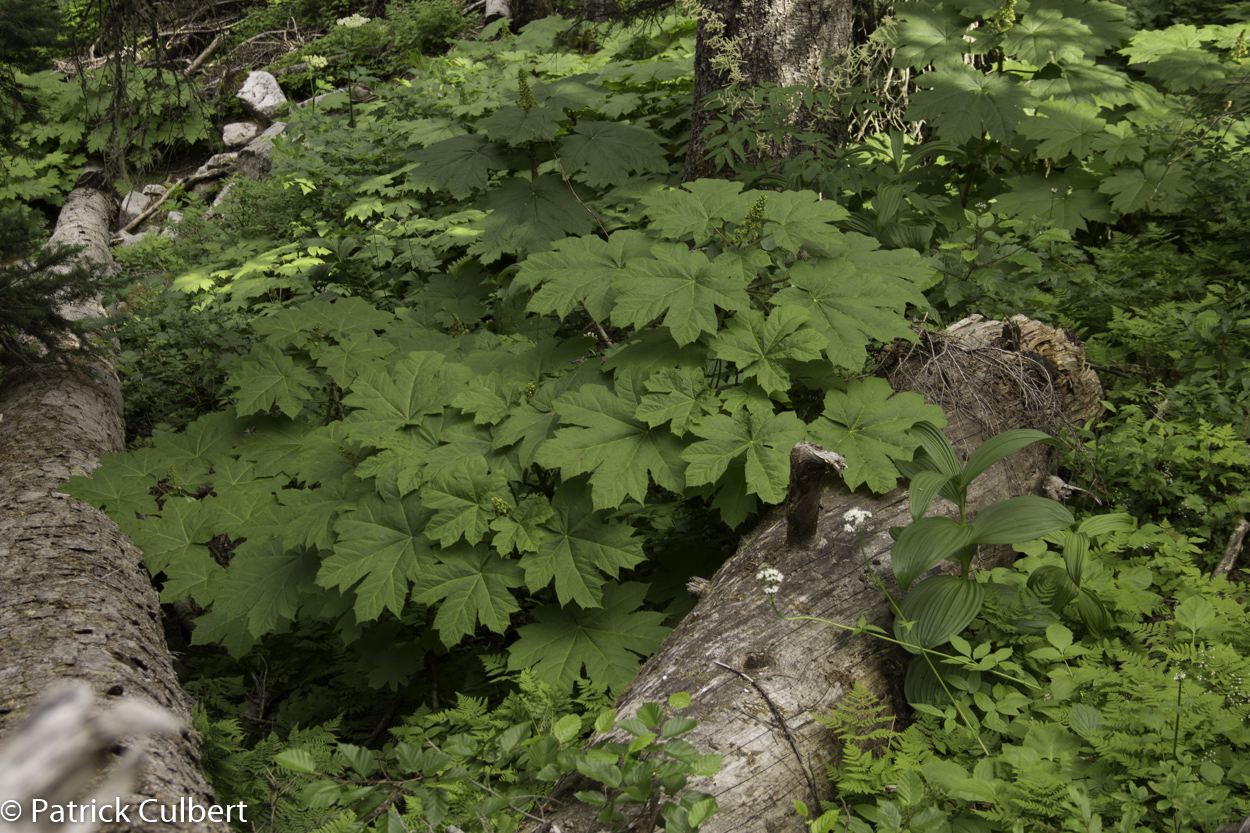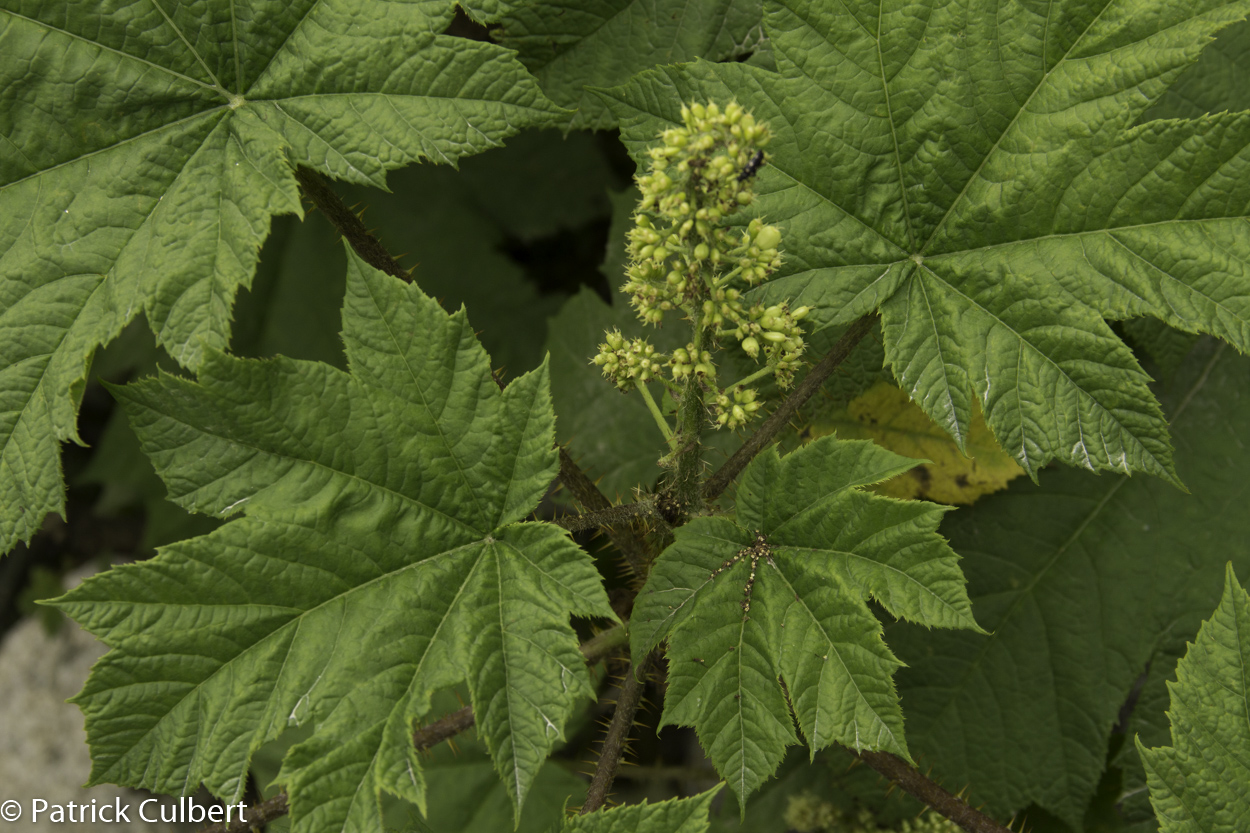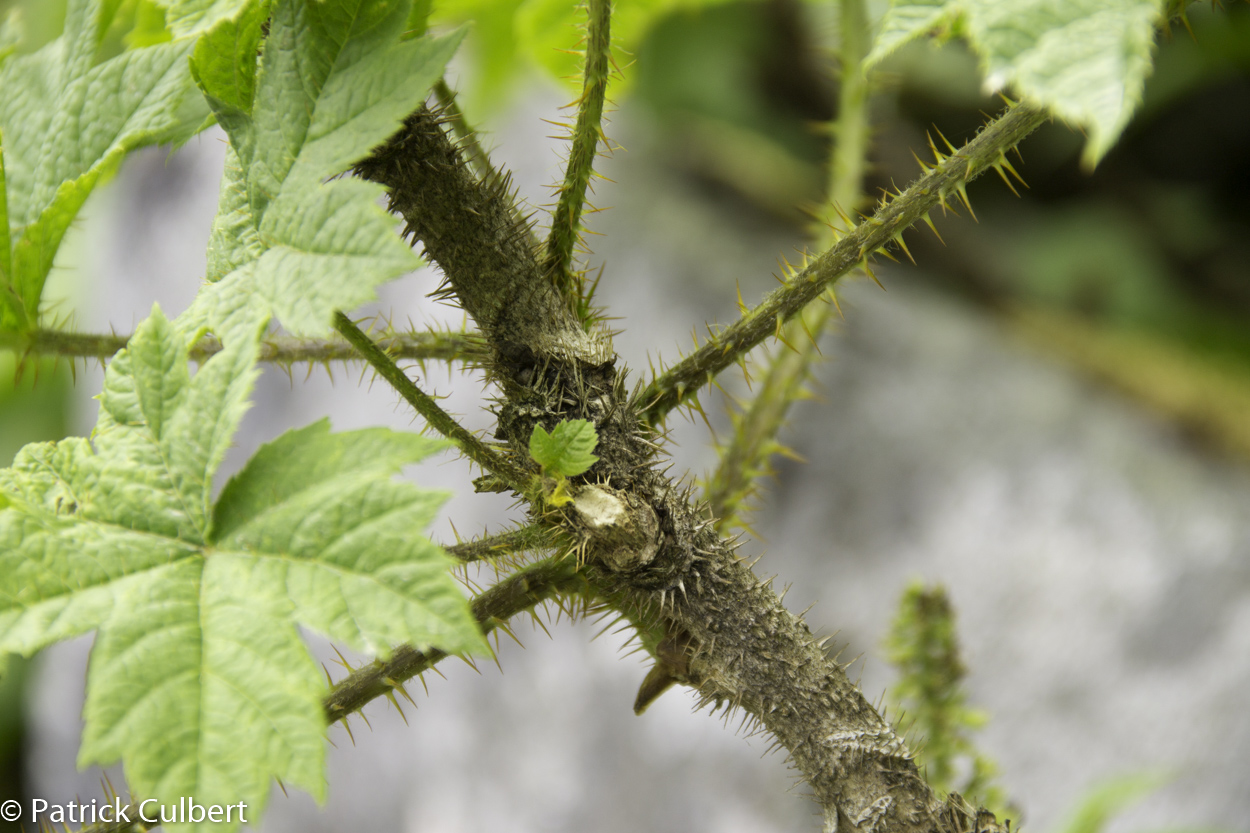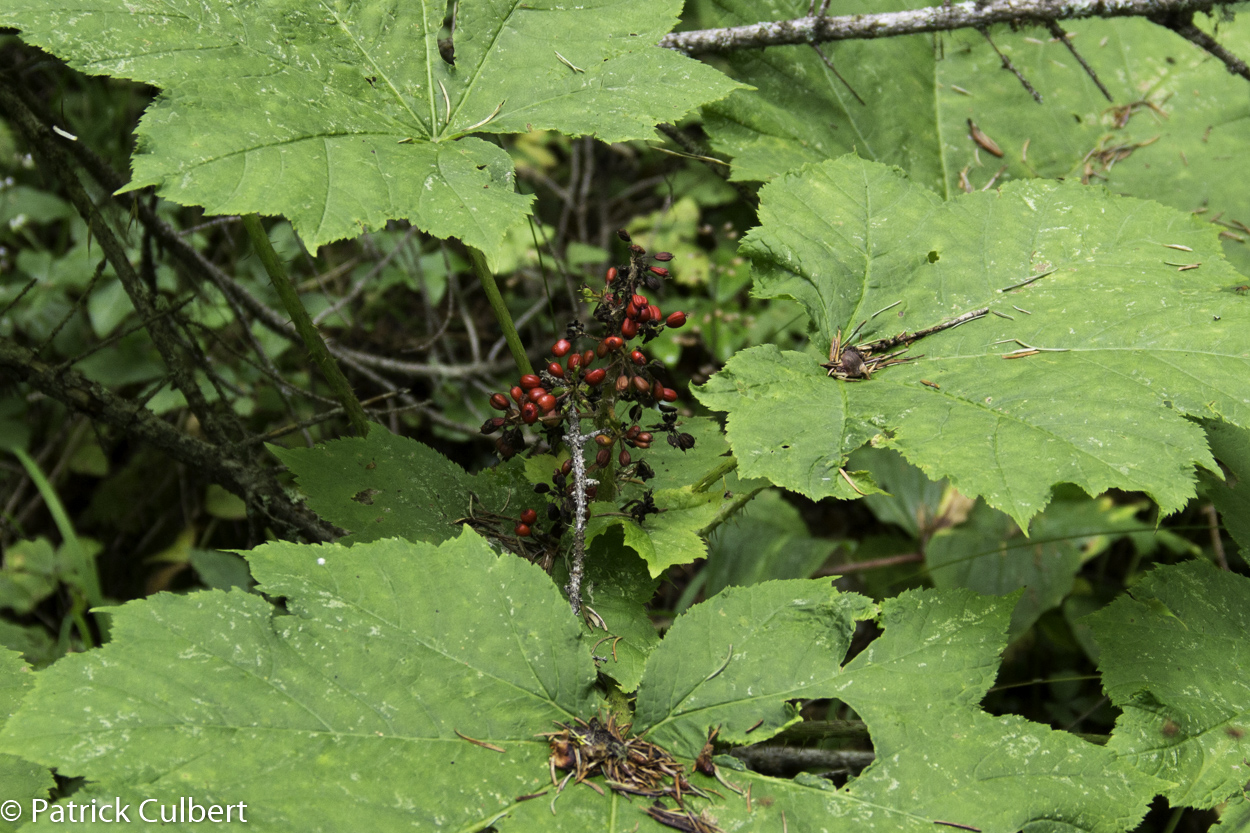Oplopanax horridus – devil's club
Common Name
devil's club
Family
Araliaceae
Scientific Name
Oplopanax horridus
Soil Moisture Regime (SMR)
- Wet (W)
Soil Nutrient Regime (SNR)
- Rich (R)
Video link
Hitchcock, C. Leo, and Arthur Cronquist. Flora of the Pacific Northwest: An Illustrated Manual © 1973. Reprinted with permission of the University of Washington Press.
General / Habitat
- Large-leaved shrub
- Grows in moist woods, particularly in seepage sites
- Low to middle elevations
- Name comes from the numerous, large spines
Key Identifying Characteristics
- Form: Erect, 1-3 m tall, stem armed with numerous long, yellow spines
- Leaves: Alternate, large, resembling a maple leaf with sharply pointed and toothed lobes, spines on underside and midvein above
- Flowers: Small and whitish, borne in terminal pyramid-shaped cluster
- Fruit: Bright red, flattened berries, not edible
- Other: Spines break off easily when handled
Interesting Characteristics
- One of the most medicinally and spiritually important plants for all coastal peoples. Its roots were often brewed into teas and the stem was used to ward away evil.
External References
Sources
Douglas, G.W. et al (Editors). 1998-2002. Illustrated Flora of British Columbia, Volumes 1 to 8. B.C. Min. Environ., Lands and Parks, and B.C. Min. For., Victoria, B.C.
Pojar, J. and A. MacKinnon. 2014. Plants of Coastal British Columbia Including Washington, Oregon & Alaska. B.C. Ministry of Forestry and Lone Pine Publishing. Vancouver, B.C.






